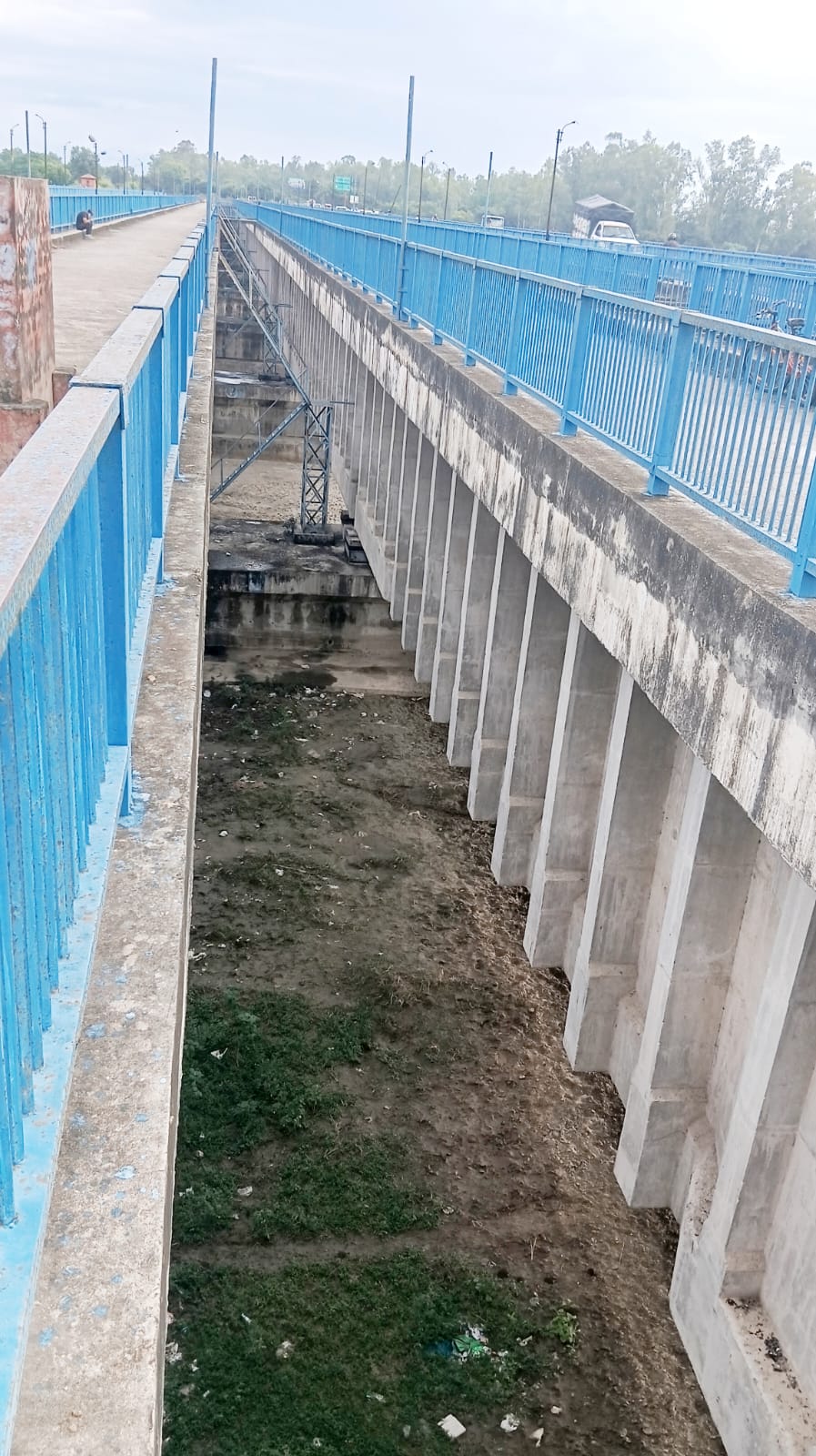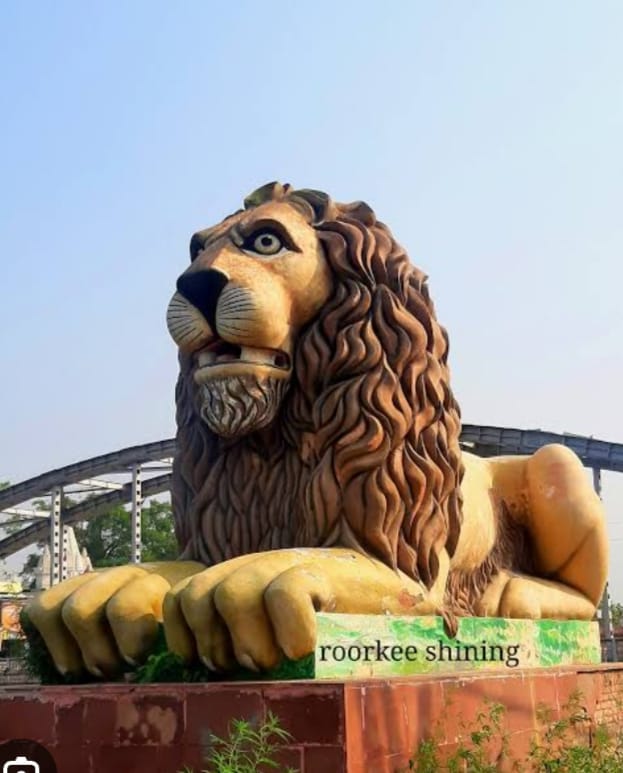By
Kaushal Kishore
Materials Engineer, Roorkee
The new Solani aqueduct on Ganges canal Roorkee was built with prestressed concrete which allows for longer spans and a simple more robust design compared to old bricks, lime- surkhi mortar masonry arches of the old aqueduct, in which 8.5 crores bricks were used, while iron railing used in the sides of two lanes were imported from England. This is interesting to note that materials bringing those days on ship from England to Indian ports take 6-10 weeks via the Suez canal or 3 to 6 months via the longer Cape of Good Hope. Calculate in it also time taken on road from Indian ports to Roorkee.
After retirement from University of now IIT Roorkee I joined M/S Roffe Construction Chemicals Pvt.Ltdd, Mumbai as it’s Chief Concrete Technologists afterwards I became it’s one of the Director.

AQUEDUCT picture taken on 7/10/2025
For the contractor of above aqueduct I designed M-40 grade of concrete with Roffe superpladticizer. Those interested may read my paper by visiting Google site and log in; Civil engineering portal The Ganges canal by Kaushal Kishore.
I had designed numerous concrete mix design almost all cements of India in this I find Utra Tech cement as one of best cement OPC and PPC both With Ultratech cement I had designed numerous concrete mixes from ordinary strength to M-80 grade concrete, self compacting concrete, shot crete concrete, fibre reinforced concrete, fly ash concrete and more There is life after retirement and after retirement I worked for 30 year’s which includes in free time working in home research and testing laboratory and numerous construction sites visits almost all India and outside India. At my age of 92 years I still work for 12 hours daily.
I had never worked for money. In spite of doing so gigantic work what to say about car I even do not have 2 wheeler not any of my house not a single inch of land in this world only pension from IIT Roorkee and few clothes

























Sir , I am very much interested in knowing the small info and facts in civil engineering , plz send me all the info to my mail id , THANK YOU 🙂
go to field and learn more.
sir,i completed my b.tech in civil engineering. now i want to do job releted to civil engineering in dubai. please help me.
hi sir ,i need a material on use of fly ash in concrete please help me in this regard
give the first performance for india.so dont search in any other country
you can use upto 30 %.what is the problem?
i don’t want to ignore this idea without comments and i would like to admire the”WE CREATE THE WORLD” SLOGAN for civil engineers. sir, i am a 5th year student in Bahir Dar university in Ethiopia, now i am writing thesis for graguation on structural design of rail way bridge with prestressed concrete box girder. but the course railway engineering is new in the country,due no enough proffesionals to advise me. first there was an adviser belong to me but after a time he got scholarship for further education in forein countries. now i am alone to do the project, no one can advise me. so, please help me if possible by sending materials related to the project i am doing?
if it is a full design of the rail way bridge it is better.
we can design a sloped footing without pedestal its depend upon site condition sloped footing are more stable.
I need a small help I have an already built independent portion house I want to build another house do I need to put concrete on the slab again?? What are the cheap building materials to build my pent house
the site is benificial i would be the regular visitor of this site…………..
How to calculate the steel weight for one Cu.m….?
DENSITY= MASS/VOLUME
So , volume = mass/density
density of steel=7850 kg/m3.
formula to calculate length of 1 metre bar= (d*d)/162, where d is dia. of in mm.
thanks n Regards
steel weight formula is (dia*dia)/162 for meter length but cu ..m means its density of steel is constant
for calculating weight of steel (dia*dia)/162,,, how it came?
does it take a whole week for site visits in dubai for civil engineers? is it true that they have no time for social life when they do site visits?
what is the actual amount of water in complete hydration of cement is 38 or 45
24% only for complete hydration of cement
How can the value of standard deviation describe the strength and quality of the concrete?
standard deviation gives the degree of quality control of concrete, by this we can know frequently how the degree of control of concrete is differing.
we know ac produce cfc gas which is destroying our OZONE layer. tell me alternate, economic and cheap method for cooling of rooms. thanks
What is the between horizontal and vertical laying of geotextile in segmental retaining wall construction
What is the importance of Bar Bending Schedule ?
How it is useful to the contractor ?
bar bending schedule gives the cut lengths of steel and its bending, location of placement of steel to calculate the actual quantity of steel.
It is very important for contractor BBS is use full for preparation of bill and steel consumption and requirements
how can i calculate for the volume of concrete that can fill up a pile point of 450diameter and 12meters depth?
length=12m,
diameter=0.45m
volume of concrete=length x area = 12 x 3.14 x 0.45 x 0.45/ 4 = 1.908 cu m
7850kg
How can I calculate the quantity of concrete that can fill a pile point of 12m and 450 diameter.
(3.14( (0.450)^2)*12)/4
Do you happen to know where we can attend the exam (if any)for qualification of a supervisor at civil engineering projects for Asian Development Bank or other similar employers?
how can i solve mix design problem ?